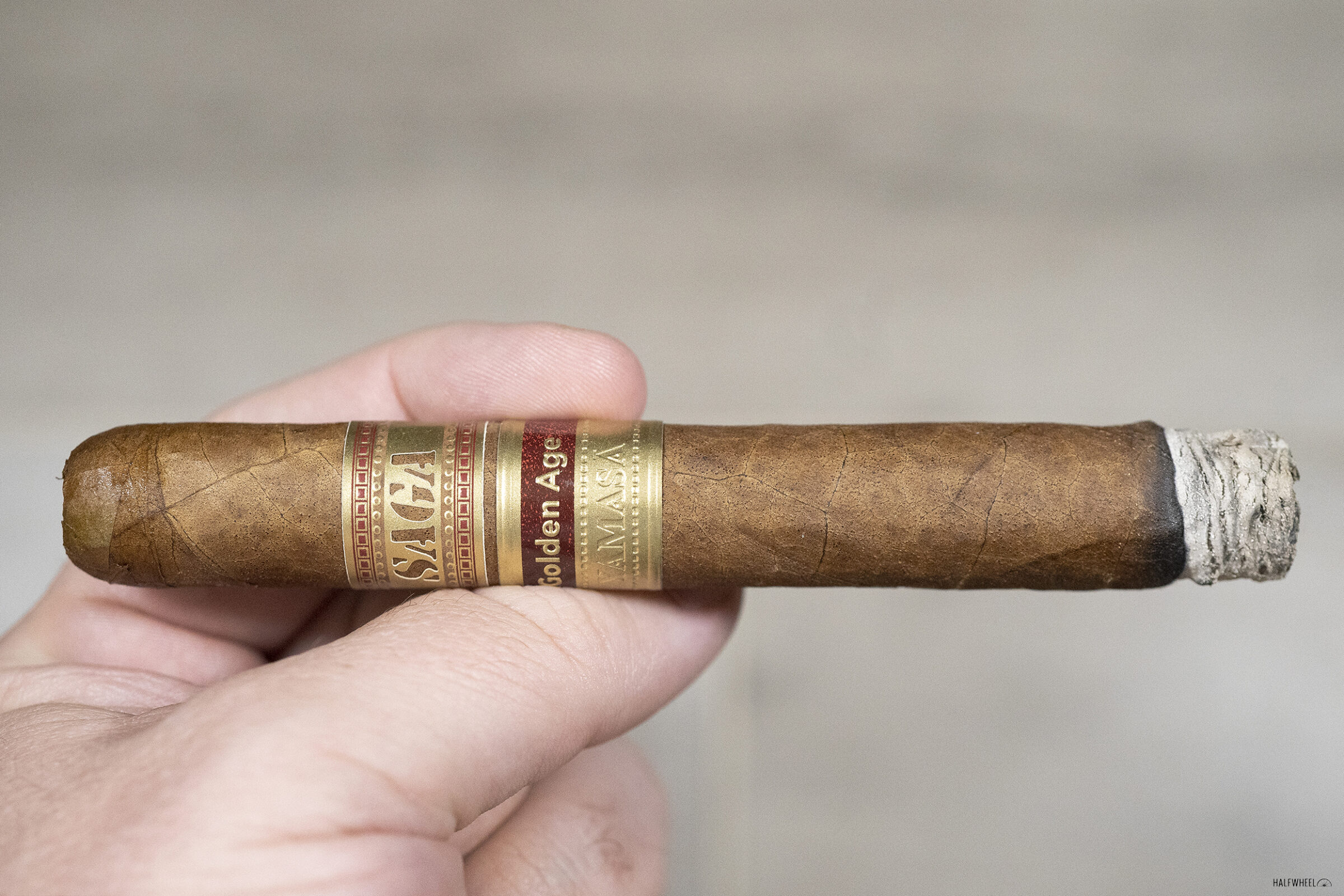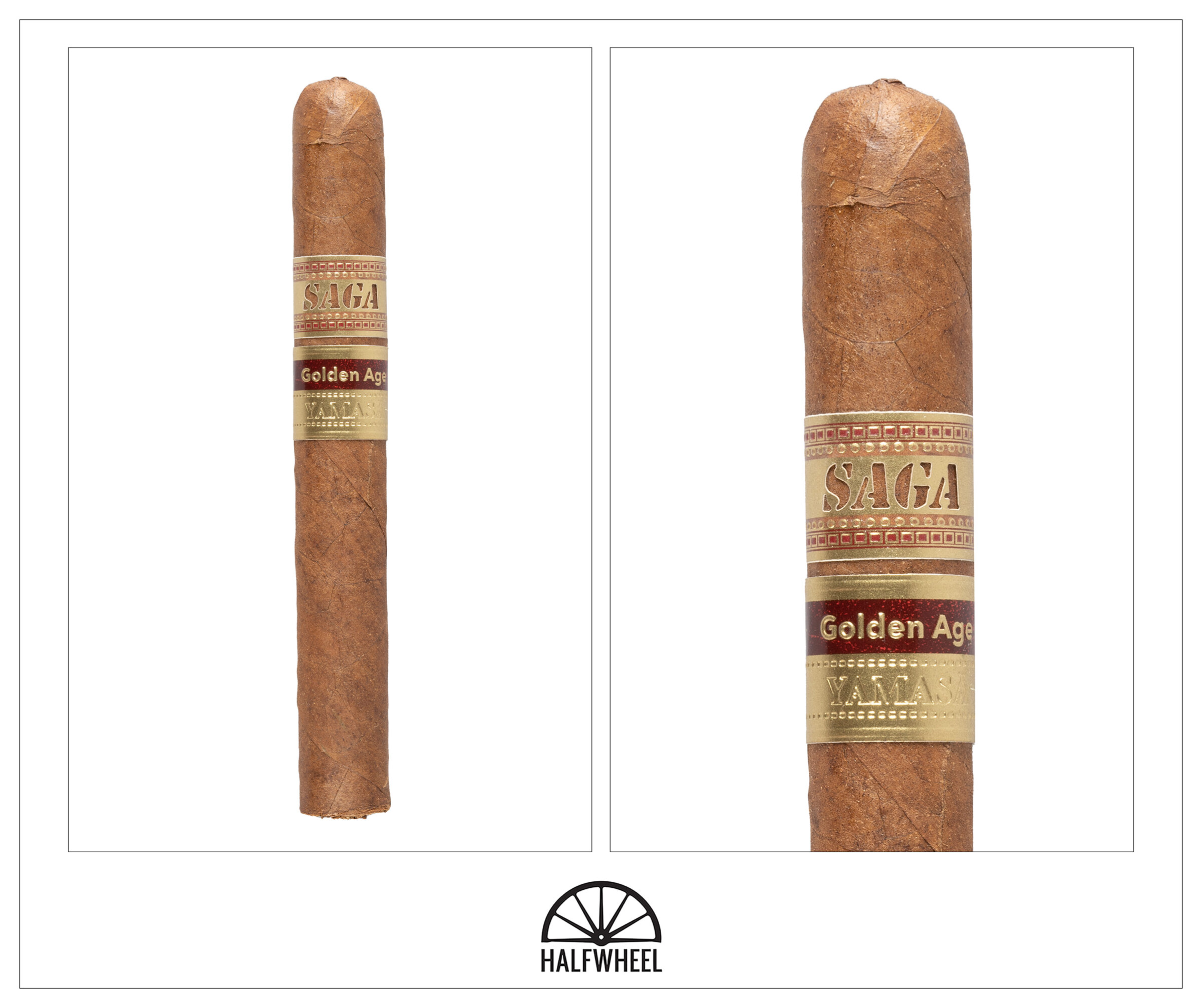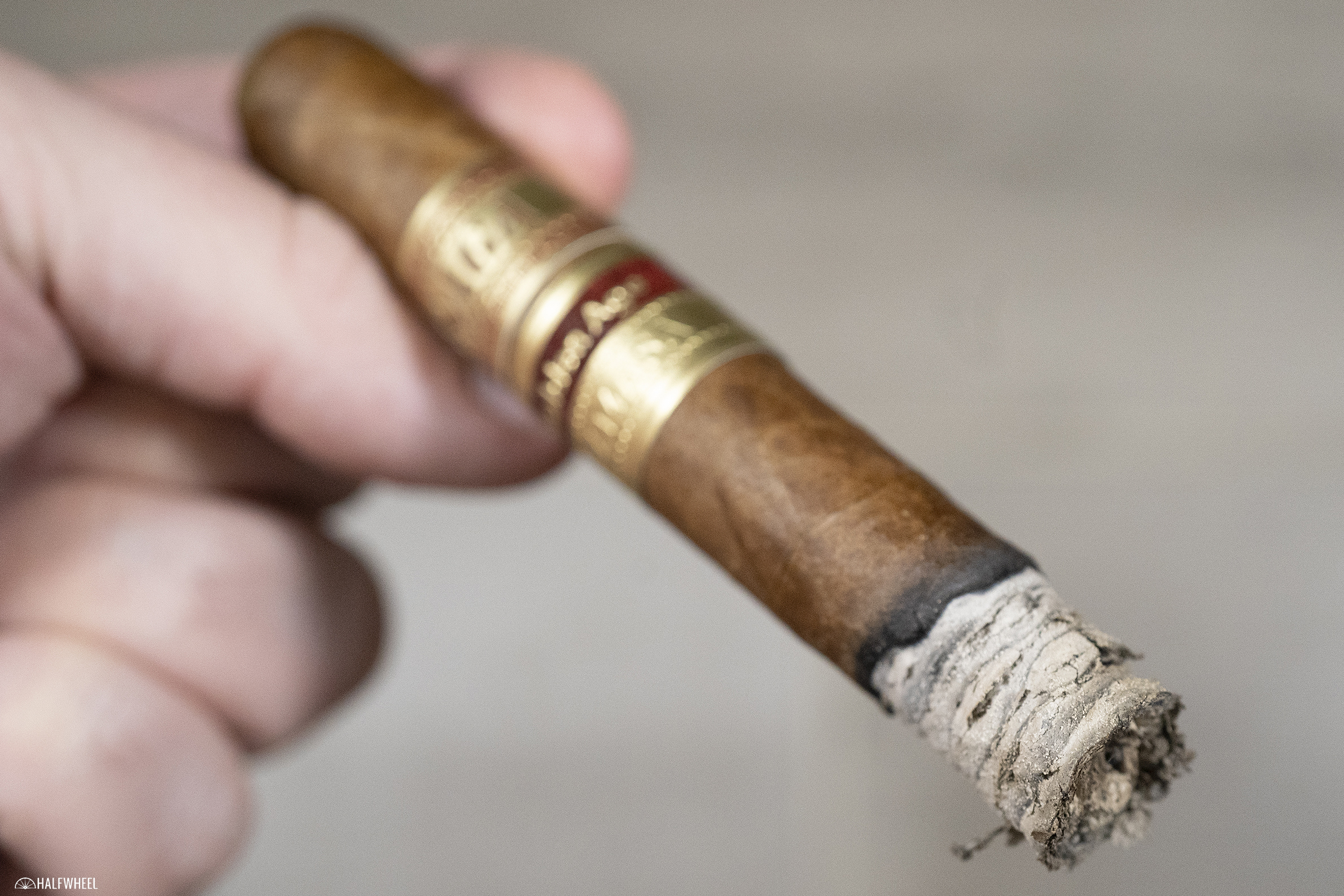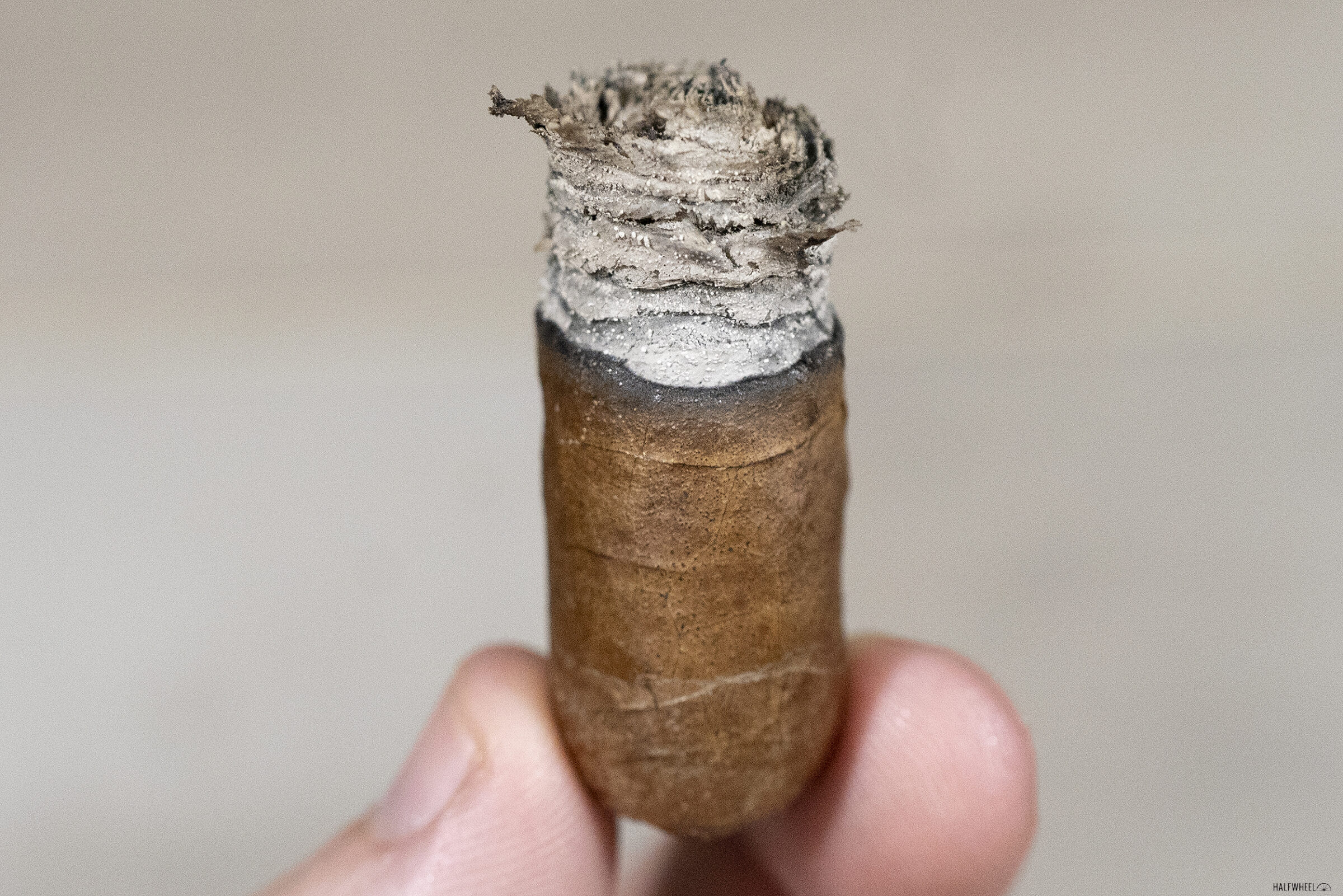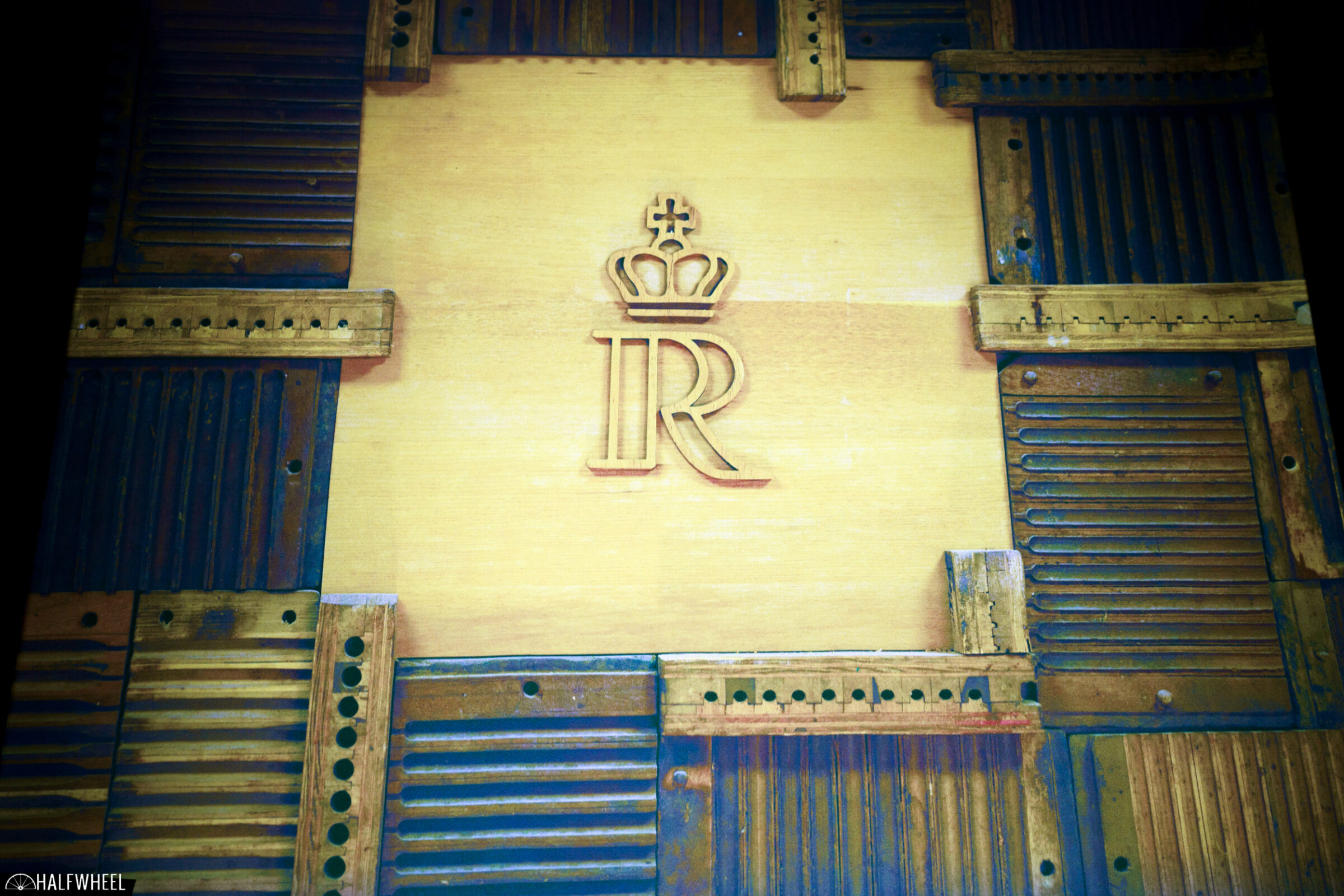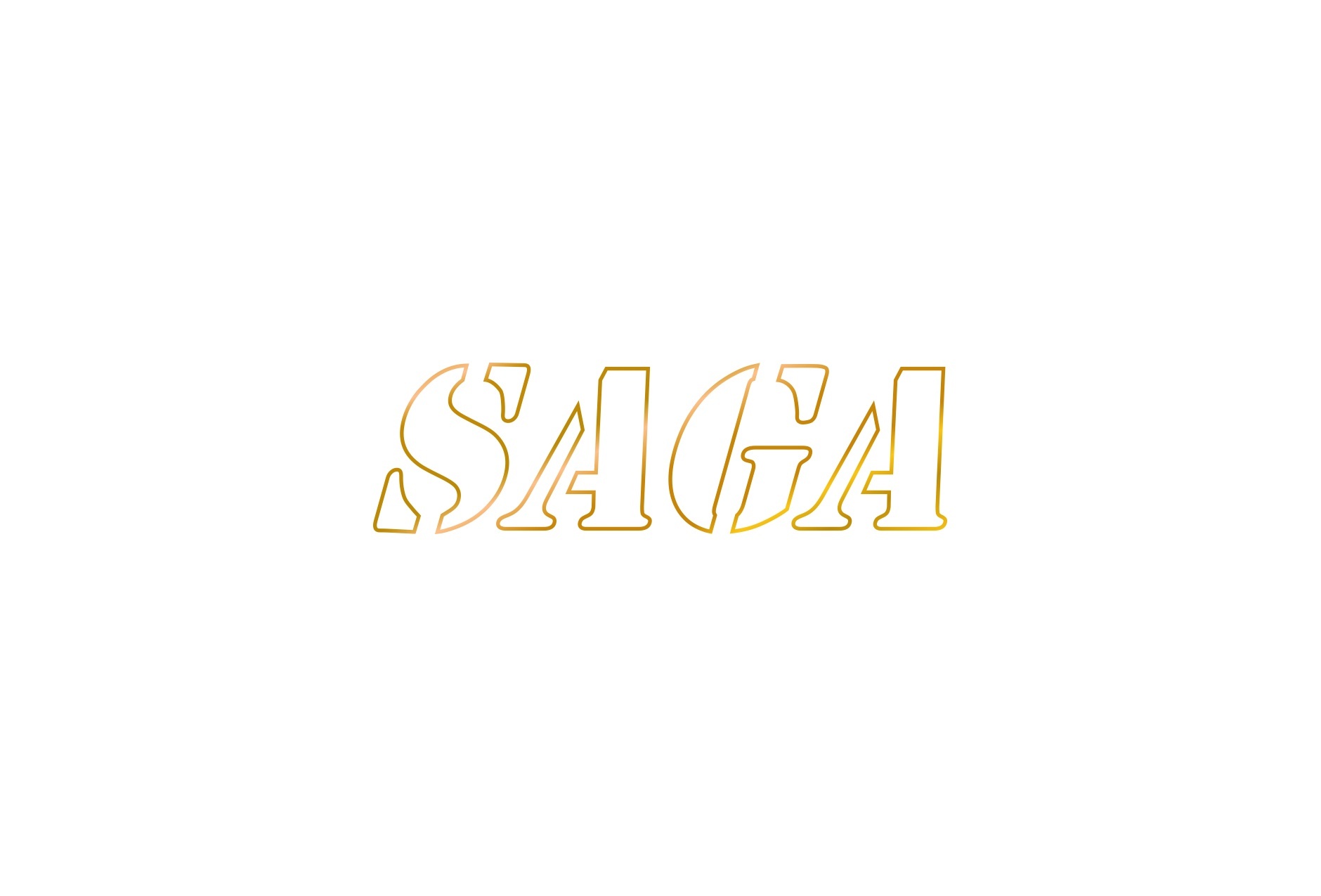At the 2023 PCA Convention & Trade Show, De Los Reyes released a new line called the Saga Golden Age Yamasá, a cigar highlighted by a wrapper leaf grown in the Yamasá region of the Dominican Republic.
Jean-Michel Louis, managing director for De Los Reyes told my colleague Charlie Minato that the company is not disclosing the binder and filler of the blend so that consumers can focus on the wrapper.
Also of note about the cigars is that the wrapper will always be four-years-old, so this 2023 release uses a wrapper from 2019 that was grown by Monica Kelner.
As of now, the Saga Golden Age Yamasá is only available in a 5 5/8 x 47 Gran Corona vitola that is priced at $14 per cigar and $140 for a box of 10 cigars. Production is handled by the De Los Reyes factory in Santiago, Dominican Republic, though production numbers are undisclosed.
The Saga Golden Age Yamasá is an offshoot of the Saga Golden Age line, which debuted in 2014 when De Los Reyes was still known as Corporación Cigar Export. That first cigar, which premiered at the 2014 IPCPR Convention & Trade Show, was a full-strength, full-bodied Dominican puro highlighted by a corojo 2006 wrapper.
- Cigar Reviewed: Saga Golden Age Yamasá Gran Corona
- Country of Origin: Dominican Republic
- Factory: De Los Reyes
- Wrapper: Dominican Republic (Yamasá)
- Binder: Undisclosed
- Filler: Undisclosed
- Length: 5 5/8 Inches
- Ring Gauge: 47
- Vitola: Gran Corona
- MSRP: $14 (Box of 10, $140)
- Release Date: July 2023
- Number of Cigars Released: Undisclosed
- Number of Cigars Smoked For Review: 3
I’m impressed by how well the gold and maroon of the bands works with the wrapper leaf, as both colors bring out different aspects from the leaf. The leaf itself is a medium-brown shade that isn’t particularly red or golden-hued on its own. All three wrappers are on the dry side and have a good bit of texture for my fingers, the result of both a lack of oiliness and the texture of the leaf itself. The cigars are pretty typical in terms of density, rolled to be firm but not hard and still showing some give. Each of the three cigars is rolled well without any visual issues, and that includes the very flat seams. If anything, the little twist of tobacco at the heads of the cigars seems to get overshadowed as it is pressed down into the head, and it’s not until I’m about to cut it off that I notice it’s there. The foot of the cigar has aromas of wheat cereal, wheat toast and a bit of sweet cream, with no pepper noticeable to my nose. The cold draw is very smooth both in terms of airflow and how it feels as the air moves through the cigar, almost as if there is a slight oiliness on the leaves that allows air to avoid any friction. Flavor-wise, I get a softer profile marked by wheat Chex, a little cream and just a sprinkle of black pepper.
The Saga Golden Age Yamasá Gran Corona starts off with an oily potato chip note along with some black pepper that gets right to work on my taste buds. I’m a bit puzzled by the oiliness, as it has a bit of a funky twinge of flavor, not inherently bad, but my reaction at the start is similar to when I eat salt and vinegar potato chips. The cigar puts off an impressive amount of smoke in the early going, with the smoke picking up some creaminess in the first inch to add to the flavor. Without the creaminess, the flavor is quite dry, crisp and toasty; with it, it is a bit softer but not by much. Retrohales have been decently peppery since the start, tingling my nose with a medium level of intensity and just a bit of punchiness. Flavor is medium-plus in intensity, body is medium-full and strength is mild. Construction is generally very good with an easy draw and plenty of smoke, with one cigar struggling a bit with its burn line.
While I’m not inherently opposed to a cigar with a dry, toasty profile, the Saga Golden Age Yamasá Gran Corona does toe the line of being too toasty, including at the start of the second third. While the creaminess did a bit to remedy that, it’s a natural evolution of the profile that seems to do more to soften the profile, as the second third helps the profile become a bit more manageable and enjoyable. It’s not a complete abandonment of where the profile started, just a subtle mellowing. Some black pepper helps to keep the taste buds engaged and tingling. This section concludes with a bit more pepper, a bit more earth, and a bit more of a smoky finish, all combining with some underlying creaminess to present one of the more balanced expressions that the cigar has offered thus far. Flavor ebbs and flows between medium and medium-full, body is still fairly full and strength is on the upper end of mild. Construction continues to be very good, highlighted by a smooth draw and copious amounts of smoke, and hampered only by an occasional unevenness of the burn line that warrants a touch-up.
Building off the change in flavor at the end of the second third, retrohales at the start of the final third are equally dialed in, with a clean, nose-tingling pepper, and it’s a lighter-bodied sensation that what I get on my taste buds. If the components in the first two thirds were a touch to crisp and individualistic, the final third sees them come together to work more in harmony, a change that either brings about or comes along with just a touch of sweetness that I could equate to aged rum or another similarly sweet spirit. There’s still some wood and toast, but they are now more balanced secondary notes. Some final retrohales add some black pepper to the experience, and they help to call out the pepper on the taste buds as well. Flavor finishes medium-full, body is medium-full, and strength is medium-minus. Construction remains very good, with the burn line issues a thing of the past, plenty of smoke and a very smooth draw.
Final Notes
- While it’s not necessarily a new idea, I respect the thought behind not disclosing the binder and filler. But if you really want me to focus on the flavor of the wrapper leaf, I’d rather have a purito of that wrapper leaf to smoke and taste, and then light up the full blend to see what else I’m getting, as well as what the rest of the blend might be obscuring from the wrapper’s flavors.
- Unless De Los Reyes is planning on changing the size of the Saga Golden Age Yamasá for its next release, it would seemingly need to start putting dates on the cigars, either by way of the band or a SKU sticker. I bring this up since it would seemingly be interesting to know in which year the wrapper was grown, particularly once cigars start building up in my humidor and I might not remember in which year I bought a particular one.
- Yamasá is located approximately 27 miles north of Santo Domingo and approximately 71 miles southeast of Santo Domingo.
- However, because of where Yamasá is located, it’s about a 113-mile drive from Santiago to Yamasá.
- The word Yamasá doesn’t appear in the name of many cigars, but in 2016, Davidoff released the Davidoff Yamasá, a new line that also features a wrapper from Yamasá.
- Yamasá is not known for being an easy place to grow tobacco, so Davidoff raised the pH level of the soil on a plant-by-plant basis, then built climate-controlled storage areas for the tobacco as it came out of the field.
- The person leading that process for Davidoff was none other than Hendrik “Henke” Kelner, father of Mónika Kelner, who is credited with growing the wrapper for the Saga Golden Age Yamasá.
- Mónika Kelner is also married to Augusto Reyes Vargas, chairman of ARV Group, the Reyes family office, and the founder of De Los Reyes.
- Should you find yourself in Santiago, Dominican Republic, I highly recommend a visit to Saga Restaurant & Cigar Club, which was created by Reyes to give cigar smokers a place to enjoy a cigar and a meal at the same time.
- Charlie Minato and I have both had the opportunity to visit the De Los Reyes factory and farms during the Procigar Festival, here are some pictures from 2014, 2019 and 2022.
- I did not find the Saga Golden Age Yamasá Gran Corona to offer much, if any, nicotine strength, either while smoking the cigar or once finished.
- The cigars for this review were purchased by halfwheel. In the interest of full disclosure, De Los Reyes sent cigars to halfwheel with a note not to review those cigars. Those cigars were not used for this review in any way.
- Final smoking time was two hours on average.
- Site sponsor Corona Cigar Co. carries the Saga Golden Age Yamasá Gran Corona.
Consistency can be a funny thing, particularly when it comes to cigars. In the case of the Saga Golden Age Yamasá Gran Corona, there was some consistency, or rather, some things that the cigar offered consistently. First and foremost is offer a dry, toasty, almost cripsy flavor from start to finish. It's a perfectly fine flavor, but much like handfuls of Chex Mix will only deliver so many flavors, such was the case with one of these cigars. The Saga Golden Age Yamasá Gran Corona shines brightest when that core flavor gets accents, which in the case of the third—and highest scoring cigar—was due to the addition of a thick sweetness and creaminess. I don't like having to say that it will take smoking multiple cigars to see all that the Saga Golden Age Yamasá Gran Corona is capable of, but that feels like the case here.

